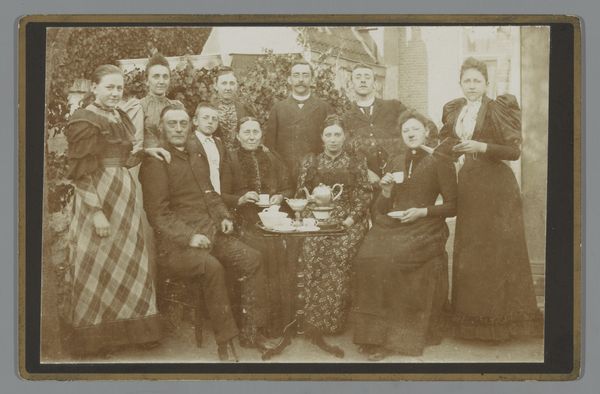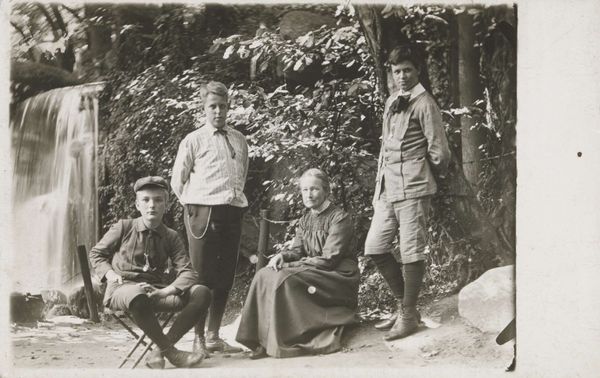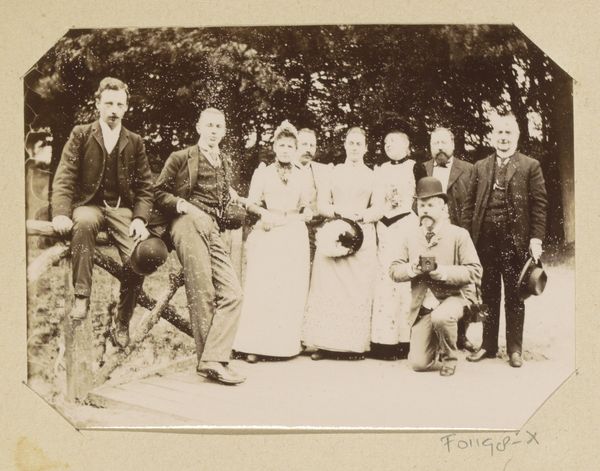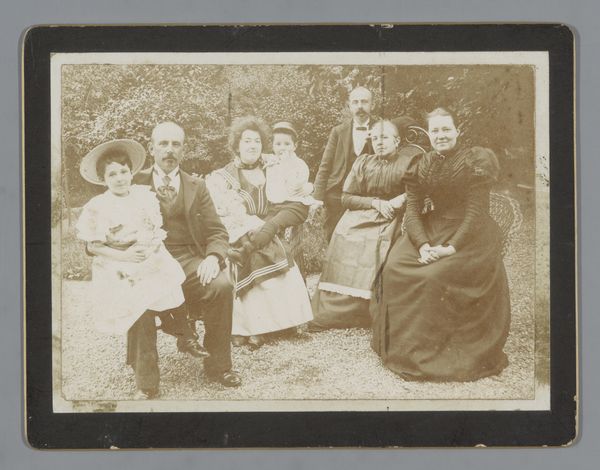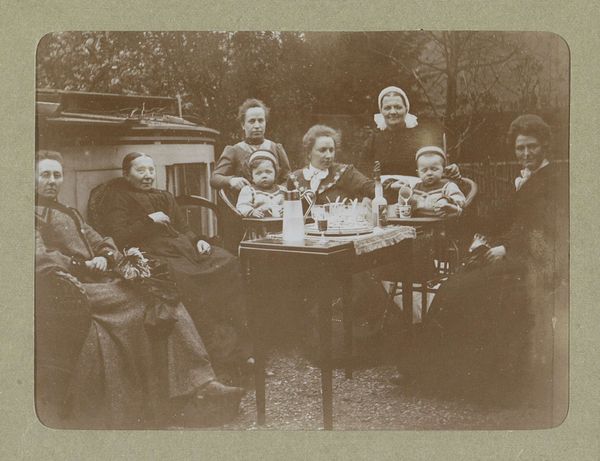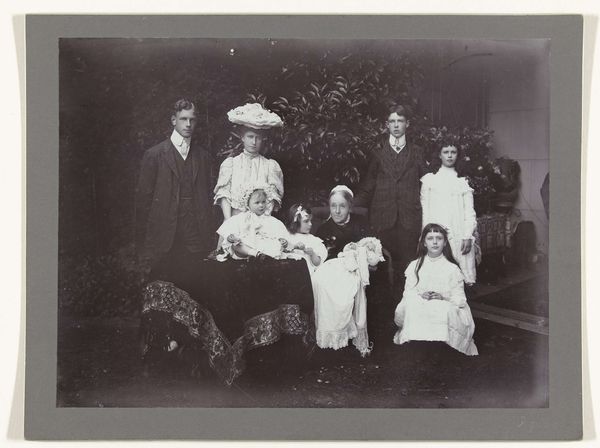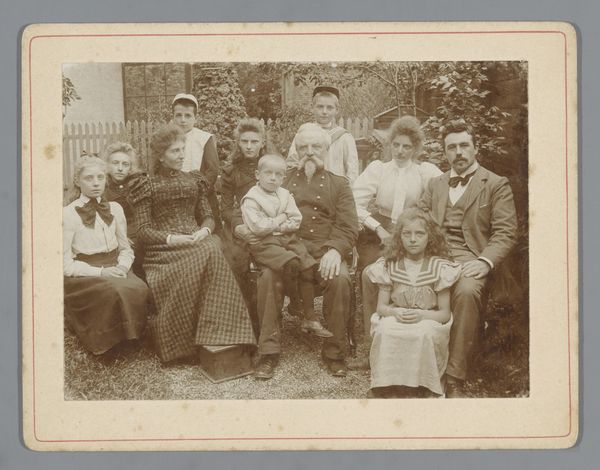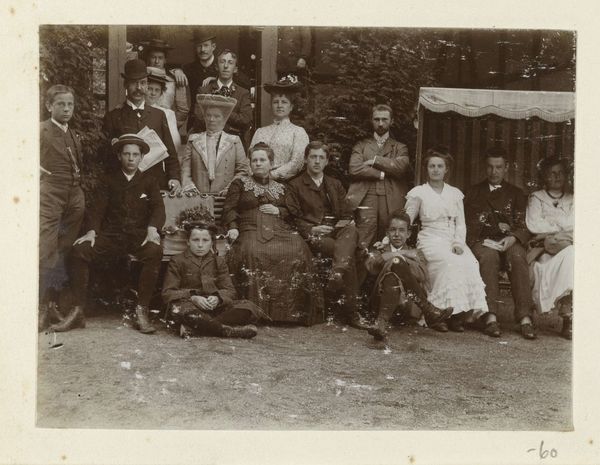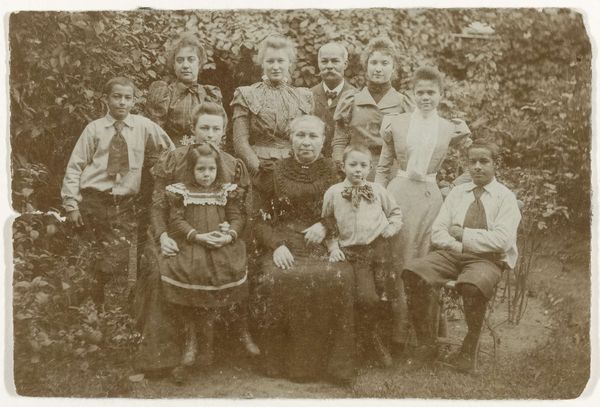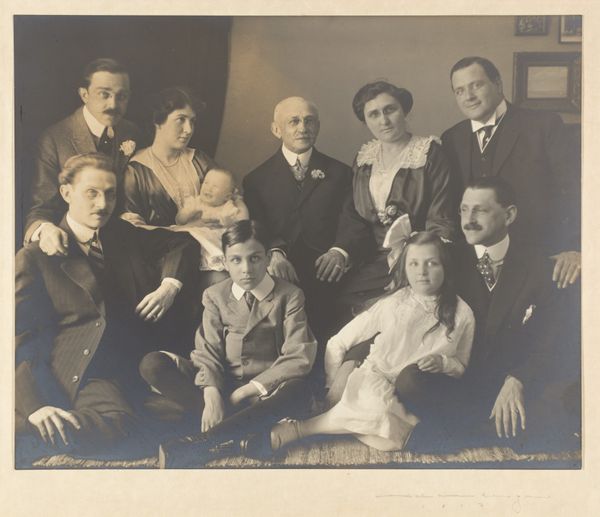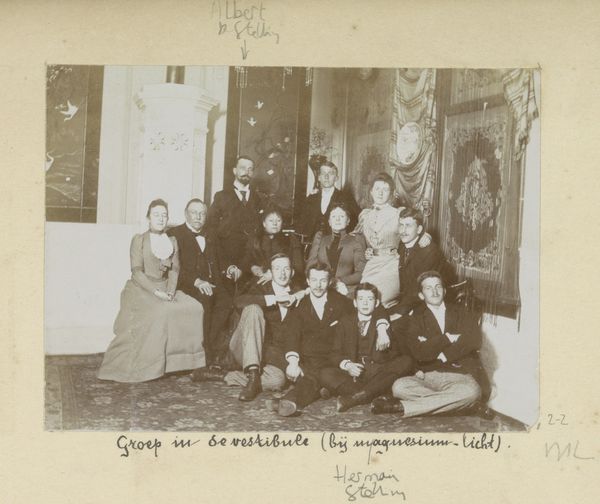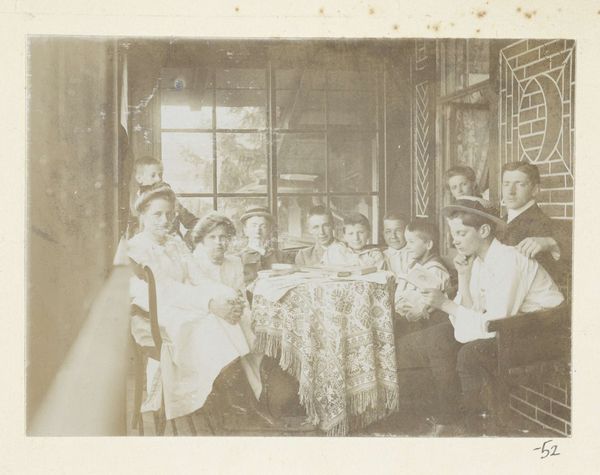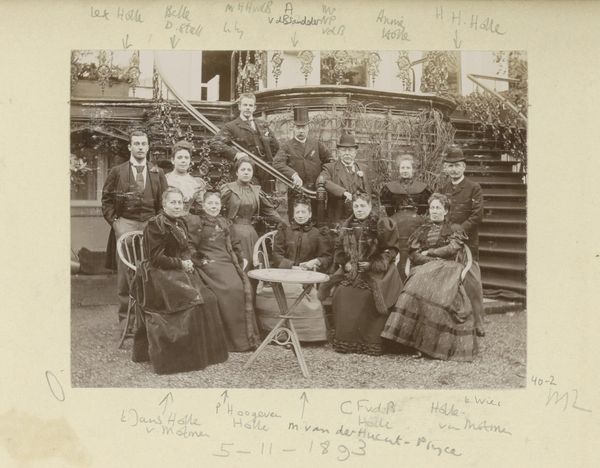
photography
#
portrait
#
photography
#
group-portraits
#
genre-painting
#
realism
Dimensions: height 98 mm, width 142 mm, height 105 mm, width 164 mm
Copyright: Rijks Museum: Open Domain
Editor: Here we have a photograph titled "Familieportret van de familie Vecqueray in Valkenburg" by Johan Joachim Cohnen, taken in 1906. The sepia tone and the formal poses give it a very composed, almost austere feel. What do you see in this piece, looking beyond its surface appearance? Curator: Well, I see more than just a family portrait; I see a snapshot of societal norms and class structures at the turn of the century. The family’s stern faces and rigid postures, the opulent facade, and the presence of a pet dog reflect aspirations of bourgeois respectability, but who gets to participate in such projections of wealth? Do you notice anything about who is centered in the image versus who is relegated to the periphery? Editor: I see what you mean. The parents are clearly at the center of the photograph, while the children are arranged almost symmetrically around them. Is there something to read into their arrangement? Curator: Absolutely. Consider how photographic portraits like this, though seemingly straightforward, served as powerful tools for shaping public image and reinforcing social hierarchies. The composition, with the father seated prominently and the mother beside him, echoes the patriarchal structure of the era. Look at the women’s elaborate but restrictive clothing, which signals an almost ornamental role, a status symbol for the family's wealth. What message is the image subtly broadcasting? Editor: So, it's not just a family photo but also a carefully constructed statement about their position in society? Curator: Precisely. The very act of commissioning such a formal portrait during a time of rapid social change speaks volumes. It represents a desire to fix and solidify identity amidst anxieties about modernity and shifting power dynamics. Even the location, outside their grand house, performs this function. This family actively chose to perform itself. What do you think that performance achieved? Editor: It gives me a new perspective on what it meant to document family back then. It makes me wonder, what power do we have today to reclaim the photographic image from older historical uses of image-making? Curator: That's precisely the dialogue we need. By interrogating the visual language of the past, we equip ourselves to critically engage with the image-saturated present.
Comments
No comments
Be the first to comment and join the conversation on the ultimate creative platform.
